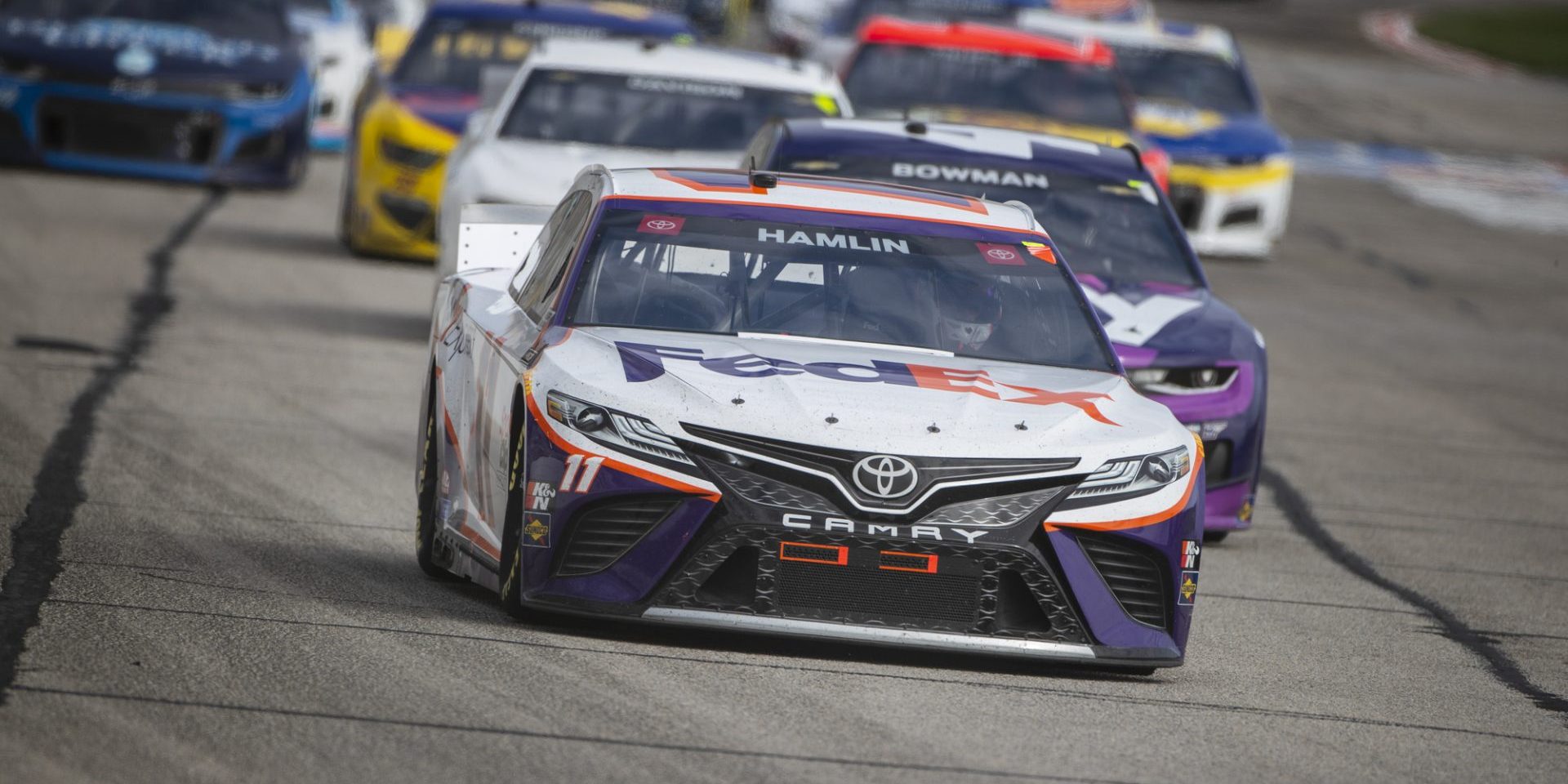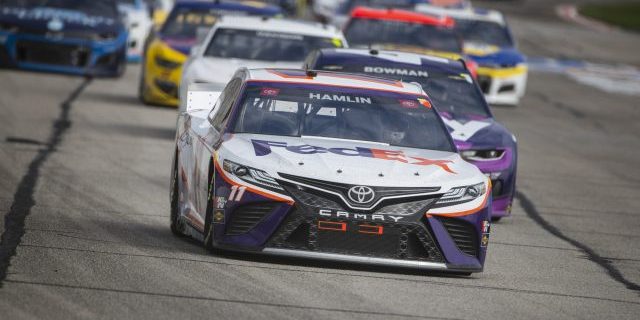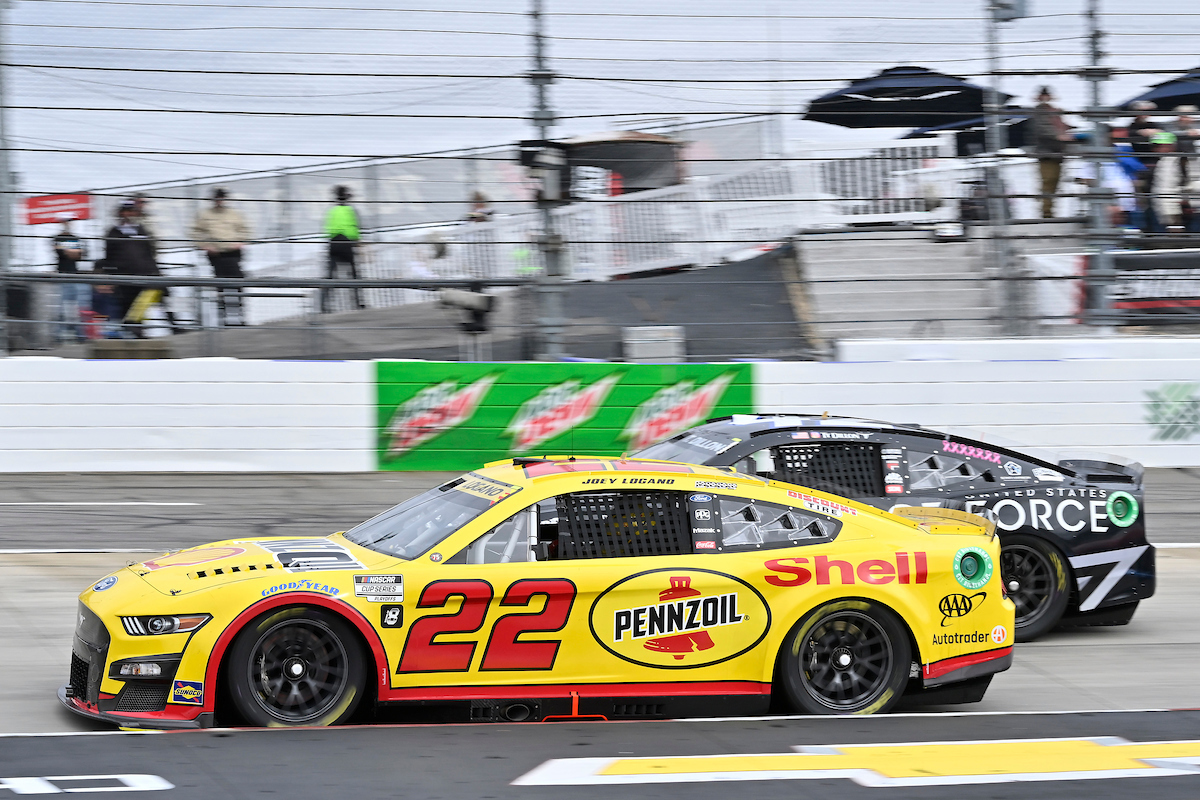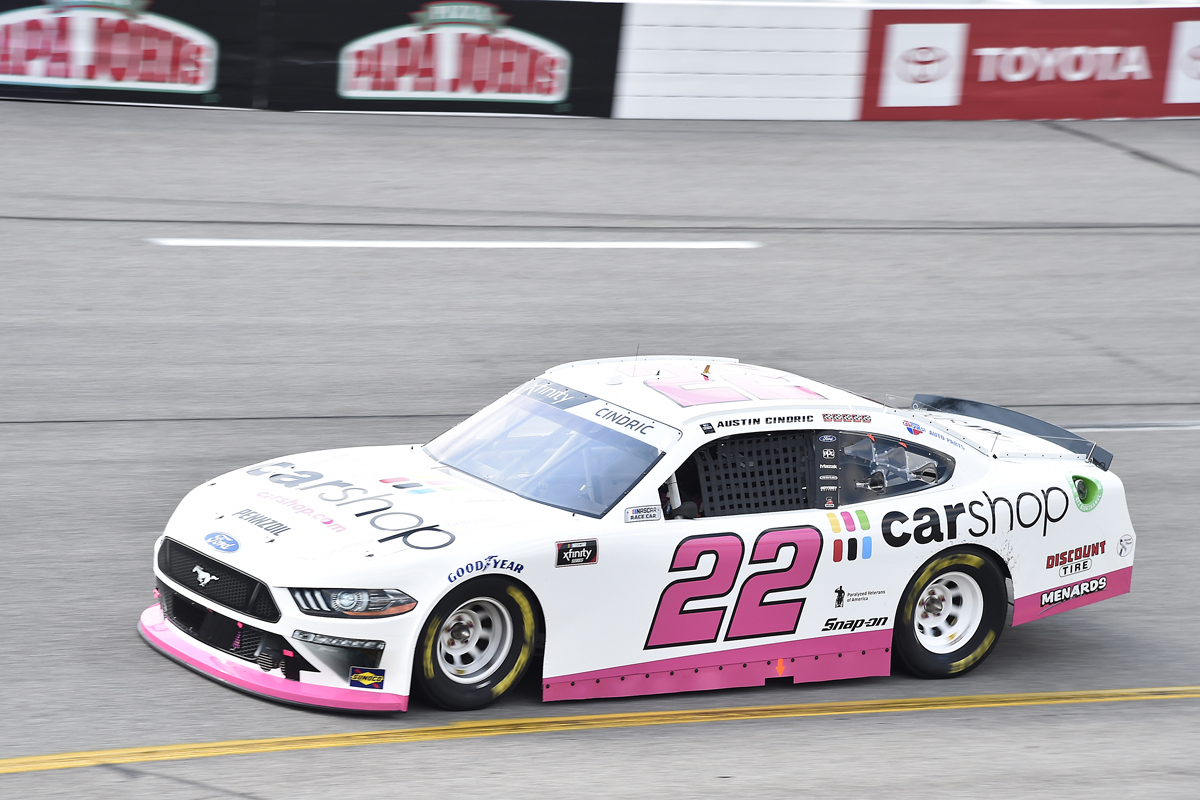What Is Minimum Speed In NASCAR? Understanding Race Regulations


The minimum speed in NASCAR is a set speed that all drivers must maintain to be allowed to continue racing in an event. This minimum speed in NASCAR is typically set at 115 percent of the fastest lap time set by any driver during the final practice session. For example, if the minimum speed was calculated at a track where the fastest lap in final practice was 32.87 seconds, or 115.88 mph, then that would be the speed drivers need to exceed to avoid being flagged for not maintaining the minimum speed. The rule ensures that all cars on the track can compete at a pace that is safe and competitive with the rest of the field.
The implementation of minimum speeds is intended to prevent slower cars from interfering with the race leaders and to guarantee that the field maintains a certain level of performance throughout the event. Sustaining the required speed is also a safety measure to reduce the risk of accidents that can occur when there is a significant disparity in the speeds of the cars on the track. Vehicles that fail to meet the minimum speed may be directed to leave the track and potentially face disqualification from the race.
Key Takeaways
- NASCAR’s minimum speed rule ensures all cars meet a specific performance level.
- The rule aids in maintaining safety and competitive fairness during races.
- Minimum speed requirements can lead to disqualification if not met.
Table of Contents
Historical Context and Evolution of Minimum Speeds
The regulation of minimum speed in NASCAR has a long history, serving to maintain competitive balance and ensure safety on the race track.
Origins of the Minimum Speed Rule
The minimum speed rule in NASCAR was instituted to prevent excessively slow cars from posing a hazard on the track. These regulations ensure that all vehicles maintain a speed that allows for safety for drivers, officials, and spectators. Racing series like NASCAR have always sought a balance between competition and safety, and establishing a minimum speed is one measure to this end.
Notable Changes Over the Years
Over the years, NASCAR has periodically modified the minimum speed requirements as part of its rule book refinements. For instance, in the 2018 NASCAR season, officials examined minimum speeds closely, recognizing the risks posed by slow-moving vehicles to the fast-paced racing environment. Adjustments to the minimum speed are made with consideration for track size, layout, and surface, reflecting the varying demands of the diverse circuits that comprise the NASCAR schedule. These speed regulations are regularly reviewed to adapt to the evolving nature of the vehicles and the competition.
NASCAR’s Implementation of Minimum Speeds
NASCAR has established minimum speed requirements to ensure safety and maintain the competitive nature of races. These rules are actively monitored and enforced by officials during events.
Determining the Minimum Speed
NASCAR determines the minimum speed for a race based on a percentage of the fastest lap time during practice sessions. This percentage ensures that all vehicles on the track maintain a competitive speed while considering varying track sizes and conditions.
Role of NASCAR Officials
Officials play a key role in enforcing minimum speed regulations. They monitor lap times continuously, ensuring that all competitors adhere to the established speed requirements. If a vehicle fails to maintain the minimum speed, the driver receives a notification to pick up the pace or remedy any issues causing the slowdown.
Consequences for Falling Below Minimum Speed
When a vehicle does not meet the minimum speed, consequences are applied to maintain the integrity of the race:
- Warning: Drivers first receive a notification to increase their speed.
- Black Flag: Continuing to fall below minimum speed results in a black flag, requiring the driver to pit.
- Disqualification: Repeated offenses can lead to disqualification from the race.
Failure to comply with minimum speed requirements can also result in lap cars impeding faster competitors, which is a significant safety concern and affects the overall flow of the race.
Minimum Speeds Across Different Tracks
NASCAR’s minimum speed regulation is a key factor in maintaining competitive balance and safety during races. It varies depending on track type and impacts racing strategies.
Variations in Speed by Track Type
Superspeedways: On these high-speed, oval circuits, NASCAR race cars can reach speeds well above 200 mph. Given the aerodynamic drafting, the minimum speed is critical to prevent slower cars from impeding the pack and potentially causing safety issues.
Short Tracks: Smaller and often more angular tracks result in slower overall speeds; therefore, the minimum speed requirement is reduced in comparison to superspeedways. This allows drivers to focus on precision and car control through tighter corners.
Road Courses: These tracks feature diverse turns and elevation changes. Average speeds are lower, typically ranging from 70-80 mph due to the technical nature of the course, leading to variations in the prescribed minimum speeds to accommodate different sections of the track.
Impact on Racing Strategy
In NASCAR, adhering to minimum speed regulations is not only a safety measure but also plays a strategic role. Teams must optimize car setups for tire wear and fuel consumption to stay above the minimum speed while also devising race strategies that can adapt to the ever-changing conditions on the track.
- Tire Management: Efficient tire usage is vital for maintaining speed, especially on abrasive surfaces. Teams strategize pit stops to ensure their tires can handle the required minimum speeds throughout the race.
- Drafting Techniques: Particularly on superspeedways, staying within the draft is essential. If a car falls out of the draft and subsequently below the minimum speed, it risks losing a lap, making strategic positioning within the pack crucial.
By understanding these track-specific minimum speeds and mastering the elements of tire maintenance and draft alignment, teams can secure a competitive edge in NASCAR racing.
Technical Aspects and Safety Considerations
In NASCAR, maintaining a balance between high-speed performance and driver safety is essential. Vehicle capabilities and safety systems are constantly evaluated to ensure competitiveness without compromising protection.
Vehicle Performance and Safety Equipment
NASCAR vehicles are engineered for both performance and safety. The rules package for each racing series stipulates technical specifications designed to regulate the cars’ speeds and ensure close, competitive racing. Safety equipment includes roll bars, window nets, seat belts, and the HANS (Head and Neck Support) device. These components are subject to rigorous inspections before, during, and after races to ensure they meet stringent NASCAR safety standards.
- Roll Cage: A robust structure designed to maintain integrity on impact.
- Fire Suppression: Systems installed to extinguish fires quickly.
- Fuel Cell: A specialized tank designed to reduce leakage in accidents.
Role of Spotter and Inspections
Every NASCAR team employs a spotter, who plays a vital role in maintaining safety on the track. The spotter guides the driver through traffic, communicates warnings about accidents, and coordinates with the team during restarts and other critical moments.
Inspections, which occur at multiple stages throughout a race event, ensure vehicles comply with safety and performance regulations. These checks include:
- Pre-Race: Initial evaluation of safety and performance features.
- Post-Qualifying: Certification that cars meet qualifying standards.
- Post-Race: Verification that the winning vehicle is legal.
Officials may also enforce penalties if a car does not meet the required safety or performance standards, emphasizing the importance of safety regulations in the competition. Moreover, safety crews and the pace car play pivotal roles in managing on-track incidents and maintaining order during caution periods, further contributing to the overall safety framework of NASCAR events.
Notable Incidents and Controversies
In NASCAR, the enforcement of minimum speed regulations has occasionally led to significant incidents and driver feedback, influencing the sport’s safety measures and competition rules.
Famous Wrecks and Implications
Notable accidents implicating the minimum speed rule have shaped NASCAR’s response to on-track safety. During races, cars unable to maintain a pace within 115 percent of the fastest lap in the final practice are flagged, ensuring that significantly slower vehicles do not pose a hazard to faster competitors. Such incidents have led to cautions, affecting the outcome of races and prompting NASCAR to evaluate its regulations regularly to balance competitiveness with safety.
Rules Enforcement and Driver Feedback
Driver feedback on the enforcement of minimum speed rules has been vocal, especially when it interferes with the dynamic of the race. For instance, the conduct of lapped cars during a NASCAR event can critically impact the race leaders. In one example, Kevin Harvick was in pursuit of Martin Truex Jr, and lapped cars influenced the chase during the closing laps of a race. The enforcement of minimum speed rules and their impact on race strategy remains a topic of discussion among drivers, teams, and officials.
How fast do NASCAR cars go in KM?
NASCAR vehicles are renowned for their high speeds, often reaching velocities that are impressive by any standard of motorsports. On tracks such as Daytona and Talladega, which are known for their long stretches and high speeds, these cars can achieve speeds upwards of 322 km/h (200 mph). However, these top speeds can vary based on multiple factors including the track layout, regulations, and the cars’ performance on race day.
Speeds in kilometers per hour give a sense of the sheer velocity at which NASCAR drivers compete. For instance, during qualifying rounds at superspeedways, cars are known to achieve speeds around 291 km/h (181 mph). It’s important to recognize these are speeds in controlled conditions aiming for the quickest single lap.
Below is a comparison of speeds between qualifying and the race itself:
| Track Condition | Speed (km/h) | Speed (mph) |
|---|---|---|
| Qualifying (Daytona/Talladega) | 291 | 181 |
| Race Drafting | Around 314 | Approx. 195 |
| Free Air, Race | 296 | 184 |
| Top Recorded Speeds | Up to 322 | Up to 200 |
These speeds are a product of both the car’s aerodynamics and the power of its engine, finely tuned to balance speed with safety regulations. As of the current generation of vehicles, known as the Next Gen cars, NASCAR administrators have made alterations that slightly restrict speeds for safety while maintaining the competitive nature of the sport.
What Is Minimum Speed In NASCAR? – FAQs
What is pit road speed in NASCAR?
In NASCAR, pit road speed is the maximum velocity allowed for race cars when they are entering or exiting the pit area during a race. This speed limit is enforced to ensure the safety of pit crew members and drivers. NASCAR officials establish a specific pit road speed for each racetrack, which is typically much lower than race speed.
Drivers use their tachometer to gauge pit road speed, as NASCAR vehicles do not possess speedometers. To assist drivers in complying with the speed limit, the first pace lap is run at the predetermined pit road speed. This allows drivers to note the necessary tachometer reading corresponding to the legal pit road speed.
Enforcement of the pit road speed limit employs a scoring loop system. Multiple loops are embedded in the surface of pit road and connected to electronic monitoring equipment. If a driver exceeds the designated speed, penalties are incurred, which could include a drive-through or stop-and-go penalty.
Pit road speed varies from track to track, but it generally ranges between 30 to 55 mph. For example, procedures during caution-flag scenarios at certain tracks adjust to a uniform 45 mph for the full length of pit road.
Adhering to the pit road speed limit is a critical aspect of race strategy as penalties can affect a driver’s race result significantly. Teams and drivers must carefully plan and execute pit stops, respecting the speed limit at all times to avoid costly penalties.
Why are some cars slow in NASCAR?
In NASCAR, a minimum speed requirement is enforced to maintain a competitive balance and ensure safety during races. This rule mandates that cars must travel at a speed within a certain percentage of the fastest qualifying lap time.
One cause of reduced speeds is technical disparities between teams. Well-funded teams typically possess advanced technology and resources, which allow their cars to achieve higher speeds. In contrast, smaller teams with limited budgets might have less sophisticated equipment, leading to slower speeds.
Another factor influencing speed is a team’s strategic choices, such as specific car setups tailored for endurance over speed or decisions regarding tire and fuel management. These strategies may result in a car running slower than its competitors during particular segments of a race.
Additionally, NASCAR’s introduction of rules adjustments in response to events such as crashes can directly affect vehicle speeds. For example, following a significant incident, NASCAR may implement changes aimed at reducing speeds to improve driver safety.
Lastly, during a race, a car might experience mechanical issues or damage from contact with other vehicles or barriers. Such problems can force a driver to slow down significantly to manage the issue until they can pit for repairs.
Drivers who cannot maintain the minimum speed can be black-flagged and required to leave the track, which is a decision made to keep the competition fair and safe for all participants.
Why does NASCAR limit speed?
NASCAR enforces speed regulations for several key reasons, primarily concerning safety and competition. High speeds on the race track increase the risk of accidents, which can lead to injuries or even fatalities among drivers and spectators. By setting a minimum speed threshold, NASCAR ensures that all vehicles on the track are performing within a specified performance bracket, which helps in maintaining order during the race and enhancing overall safety.
Another aspect of speed regulation is related to fairness in competition. By enforcing a minimum speed, NASCAR ensures that lapped cars do not interfere with the leaders in a race. This is important because slower cars can become obstacles, affecting the outcome of the race and potentially putting faster drivers at risk.
Furthermore, regulations around speed also serve to protect the integrity of the vehicle equipment. Racing at high speeds causes immense stress on the car’s components, and by managing the speed, NASCAR can limit the wear and tear on engines, tires, and other critical parts, reducing the likelihood of equipment failure.
A minimum speed limit in NASCAR also ensures that all racers maintain a certain level of performance capability. This promotes a level playing field by preventing cars that are not able to maintain competitive speeds due to damage or mechanical issues from remaining on the track, where they could negatively affect the race dynamic or cause safety concerns.
In summary, the limitation of speed within NASCAR races is an essential practice that upholds the welfare of all involved, the fairness and flow of the race, and the integrity and longevity of the racing vehicles.









